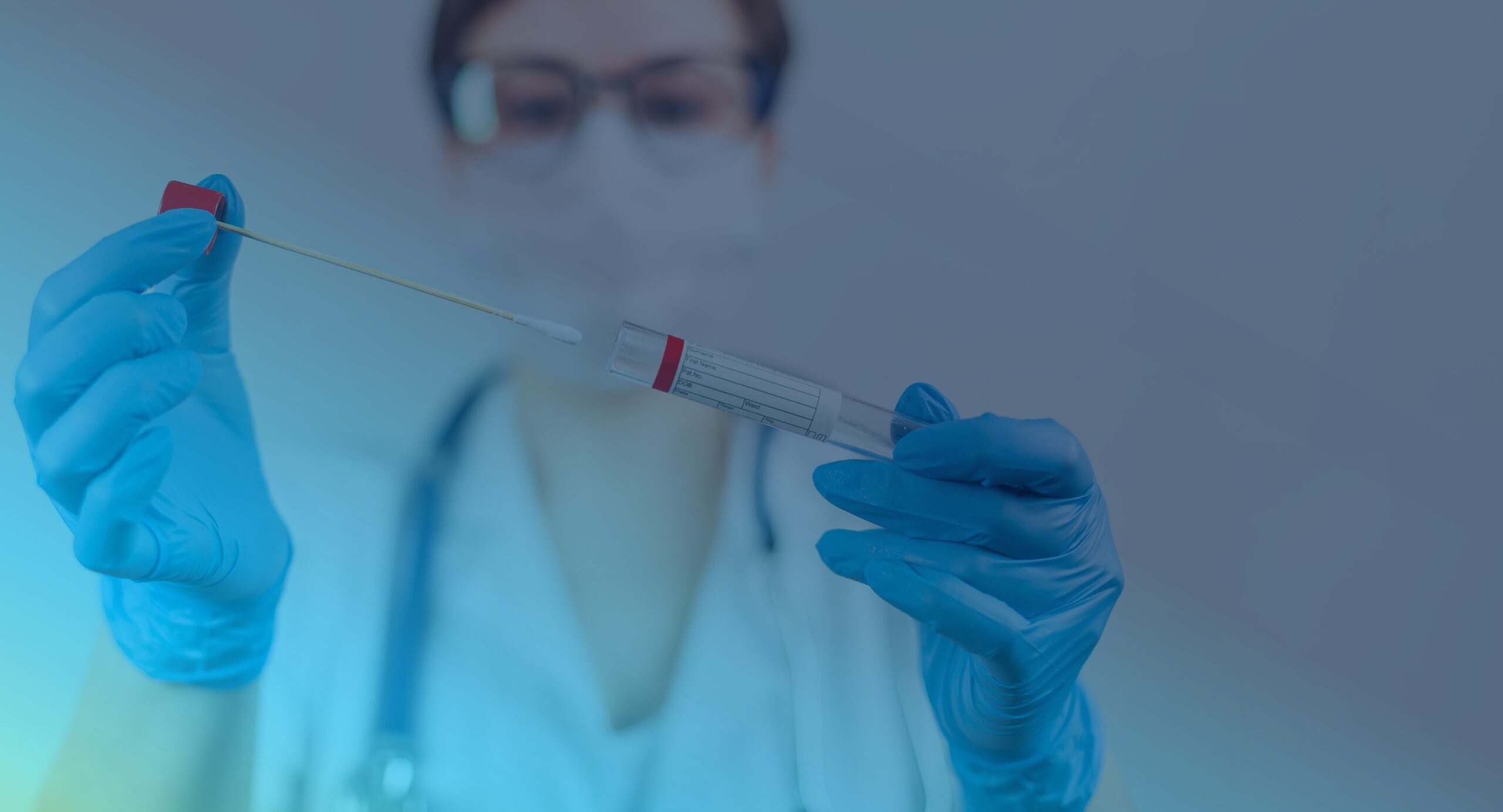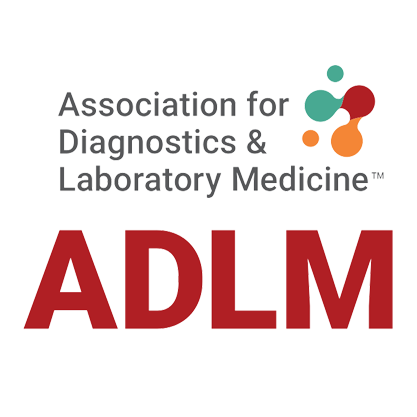This article covers swab type and selection, transport products and medium enabling a smooth transfer of patient samples to the laboratory for analysis. Additionally, we discuss the implications of cycle thresholds and whether they should be assessed in patient prognosis.
Swabs
Swabs come in all shapes and sizes and some favourites have become well known in recent months:
- Nasal Swab: needs to be inserted at least 1cm into the naris (nostril), directed upwards. May cause sneezing.
- Nasopharyngeal Swab: one method is to measure the distance from the corner of the nose to the front of the ear, then half it. This is the approximate distance the nasopharyngeal swab should be entering the nasal cavity. Use the medial side of the septum as a guide and gently rotate to facilitate insertion. The swab should run parallel to the palate and needs to be left in place for ‘several seconds’. Taking a sample is a skill in itself. The complexity and invasive nature of this test paired with lack of discrepancy compared to nasal swab results has lead to a shift in favour of nasal swabs. May cause sneezing and watering eyes.
- Oropharyngeal Swab: enters through the oral cavity (mouth). This swab aims to take material from the tonsils and the oropharyngeal wall (back of the throat), and avoids touching the tongue, teeth and gums. May cause retching.

Generally the shape of these swabs are incredibly similar, essentially long shafted cotton buds. The tips can be selected to best accommodate the chosen antigen or marker of interest and the shafts chosen for access purposes. Options include long-armed pharmaceutical grade cotton buds, or perhaps Rayon or Dacron swabs are better suited if considering a dry swab. Rayon swabs are made from synthetic fibres spun from wood pulp, whereas Dacron is made from polystyrene. Swabs destined for transport medium require different properties such as polyester or foam, they can be made less or more absorbent, have different porosities and have good ‘release’ factors. Canadian researchers investigated how specific these swabs need to be especially in the current pandemic with supplies at a premium. They determined swab type had limited impact on test results.
Transport Medium
Having collected samples with wisely chosen swabs, samples must be secured in transport medium to make their way to the lab. Again there are many choices. Generally used, Universal Transport Medium (aka UTM) will protect and conserve samples. This is a well know method and low risk regarding the preservation of the sample. Examples are the BD universal viral transport system, which can accommodate storage at room temperature or at +4°C, and Copan UTM, which contains proteins for virus stablisation, plus buffer, antibiotics and antimycotics.
Other media can provide more specific care depending on sample consistency, for example Viral Transport Medium (VTM) has specific ingredients suited to the transport of viral content. However, UTMs are also suitable for virus sample maintenance and the ingredients list of VTMs is similar. Generon outline a mix including heat inactivated fetal bovine serum, gentamicin and amphotericin B, an antifungal agent. Some recipes suggest including additional calcium and magnesium. If you are making your own sterility can be ensured by filtration or using sterile ingredients and aseptic technique upon mixing. A newer alternative is the Inactivated Transport Medium (ITM), or Molecular Transport Medium.
Inactivation – Health & Safety
It is not a large leap to identify the advantages of using ITM, and in fact there has been a call for this to take place with SARS-CoV-2 from back in April. From a UK perspective, SARS-CoV-2 is classified as Hazard Group 3 (HG3) by the UK Advisory Committee for Dangerous Pathogens. The Containment Level 3 list of requirements for low-risk handling of active HG3 infectious organisms are long and require specialist facilities, including:
- Maintenance of a negative air pressure
- HEPA systemic exhaust air extraction and filtration
- Sealable laboratory to enable fumigation
For SARS-CoV-2 research and assay development, the ability to transport and analyse inactivated viral samples potentially negates the need for such stringent containment measures. This would assist COVID-19 test developers because they would no longer need to access Containment Level 3 / BSL 3 facilities as part of their test development. Such facilities are few and far between and potentially extremely expensive to access. The CDC advises transport of inactivated COVID-19 samples in a nucleic acid extraction buffer. The nucleic acids remain intact and identifiable, the medium inactivates the protein cap (using guanidine thiocyanate and N-Lauroylsarcosine (sodium) in ethanol) and renders the virus unable to reinfect. Of course, each user will need to abide by their local risk assessments and satisfy themselves that their choice of ITM truly inactivates the virus. Inactivation may denature the antigen of interest so users would need to be sure that the ITM would be compatible with their project objectives. Users should also seek specialist advice on the containment measures required when using any ITM. Logical Biological offers SARS-CoV-2 remnant swabs inactivated in NEST Scientific ITM.
Cycle Threshold Values
With an inactivated sample safely in the lab, the molecular components are ready to be amplified and analysed. Cycle Threshold (Ct) values are important as the quantitative unit of measurement in PCR methodologies and using them in diagnostic testing can be invaluable for patient prognosis. Essentially the lower the number of amplification cycles required to reach a threshold level for the target gene is, the higher the level of target nucleic acid (and thus virus in the case of SARS-CoV-2) in the patient sample; Ct values are inversely related to viral load. Generally speaking a very high Ct value indicates a low amount of target nucleic acid in the sample, and the possibility of environmental contamination should be borne in mind. Often a Ct value of around 34 is the cut-off point for a patient to be considered positive for the infection. Many of Logical Biological’s COVID-19 swab samples are tested using Thermo-Fisher Taqpath, which has a positive cut-off of Ct ≤37. At the other end of the range we have infrequently observed Ct values as low as 9, with Ct values below 15 considered an extremely strong positive. Some Logical Biological clients wish to access a selection of swabs with a range of different Ct values, to ensure that their assay is able to detect the various different ‘strengths’ of infection. This is something we have been able to accommodate readily
SARS-COV-2 PCR Ct values have been analysed and the scientific and clinical communities are assessing if indeed Ct values, that are not often reported in clinical results, should be included and used as a marker for future prognosis. As an example please refer to Rao et al, 2020.
Available from Logical Biological
At Logical Biological we supply nasopharyngeal/oropharyngeal/nasal SARS-CoV-2, FluA and Flu B swabs available in UTM, Inactivating TM, saline or dry. Negatives, and COVID-19 / pre-COVID saliva is also available.

Want to hear more from Logical Biological?
Sign up to our newsletter to for the latest updates.
Subscribe Now

)